Projects and Science
Hungary
Europe
ABT
Hungarian distaff types

Source: http://mek.oszk.hu/02100/02115/html/2-742.html ( 09.06.2015)
A: Övguzsaly = hand held distaff. This distaff with an average length of one meter (39 inches) is clamped under the left arm of the spinner and (or additionally) stuck into the belt. Spinning can take place during walking. This type is mainly found by the southern Slavs and in Romania, including the Hungarian language areas.
B: Rúdguzsaly = rod distaff: this distaff type is substantially longer than type A (approximately 150 to 160 cm / 59 to 63 inches). This type is used clamped between the legs when sitting. To be found mainly in Transylvania (formerly part of the Kingdom of Hungary, now part of Romania).
C: Talpas guzsaly = distaff with base (lit.: talp = sole): over one meter long distaff with one (egytalpú guzsaly) or two (kéttalpú guzsaly) wing-like feet. The distaff is maintained by the spinner by either putting one of her feet on the foot/base, or, similar to Russian distaffs, sitting on the foot/base of the distaff. Disseminated in the entire area except in Transdanubia1 and the Little Hungarian Plain2. The double-winged or bipedal form is found mainly in the Great Hungarian Plain3 and in the highlands, while the one-winged form is found in Tiszántúl4 and in Transylvania.
D: Székes guzsaly = stool distaff: long rod which is inserted into a small stool so that it no longer has to be held by the spinner (in which way whatsoever). This distaff can be used both with a hand spindle, and with a spinning wheel. Distribution: Transdanubia, Little Hungarian Plain and Satu Mare (formerly Satu Mare County) 5 and Transylvania in Romania.
Distaffs of different types can also be combined. The distaff type B (Rúdguzsaly - rod distaff) can also be inserted into a foot or into a stool and be used like a Talpas or Székes guszaly .
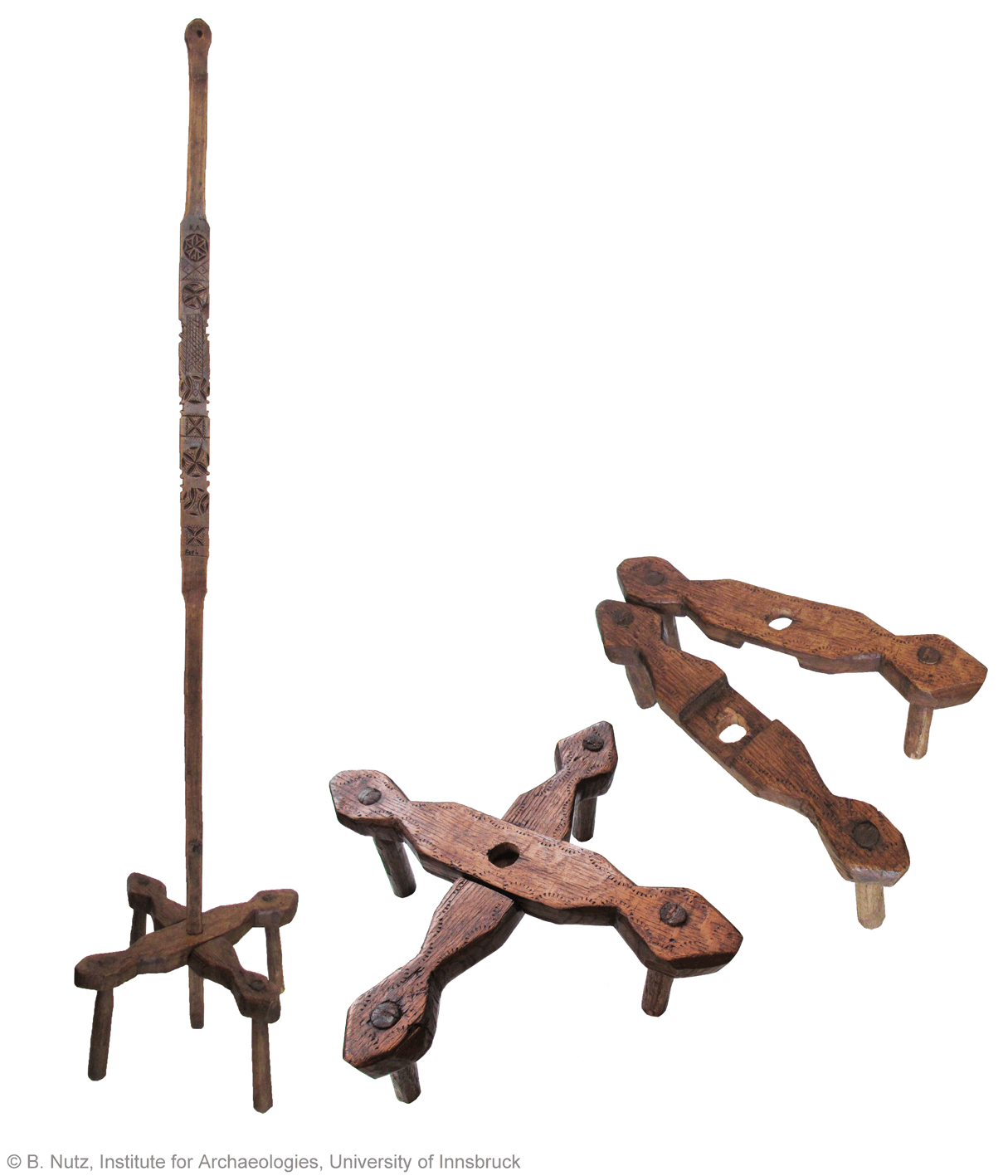
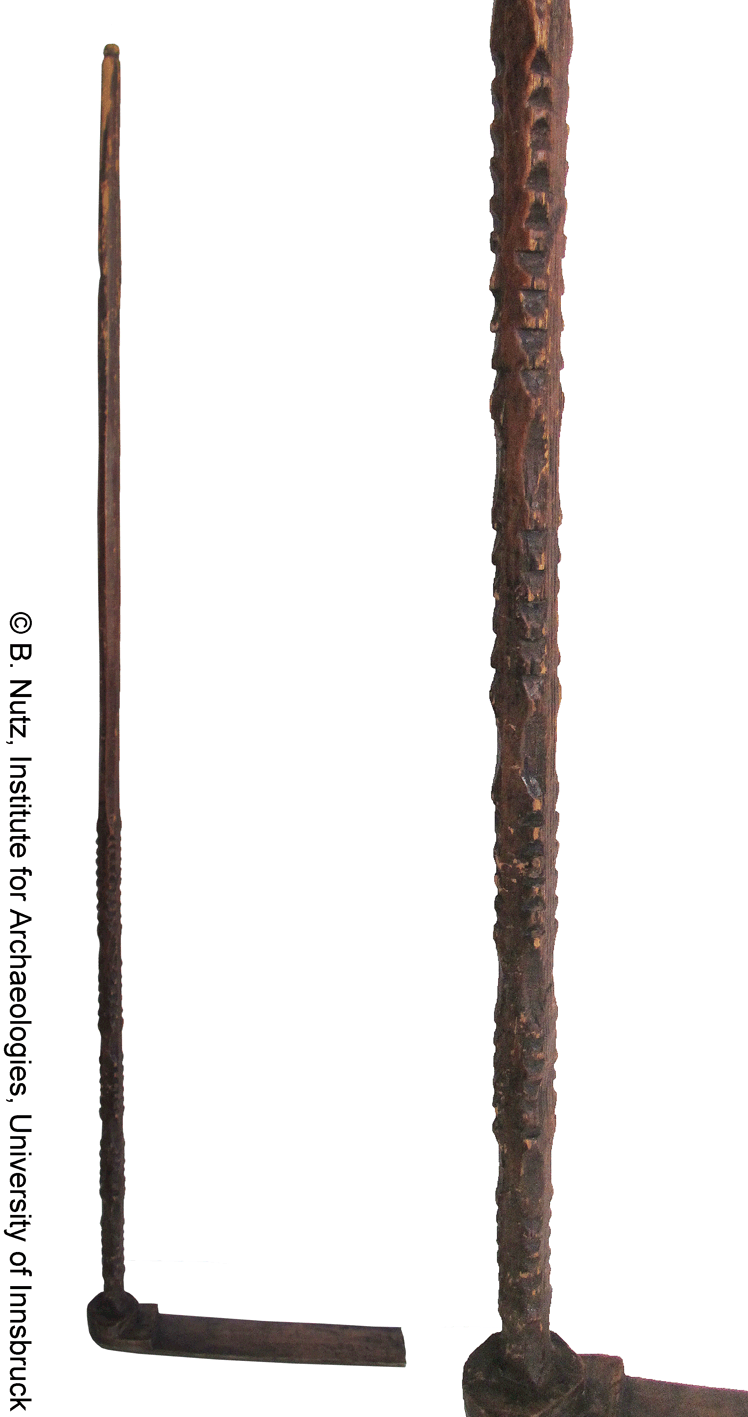
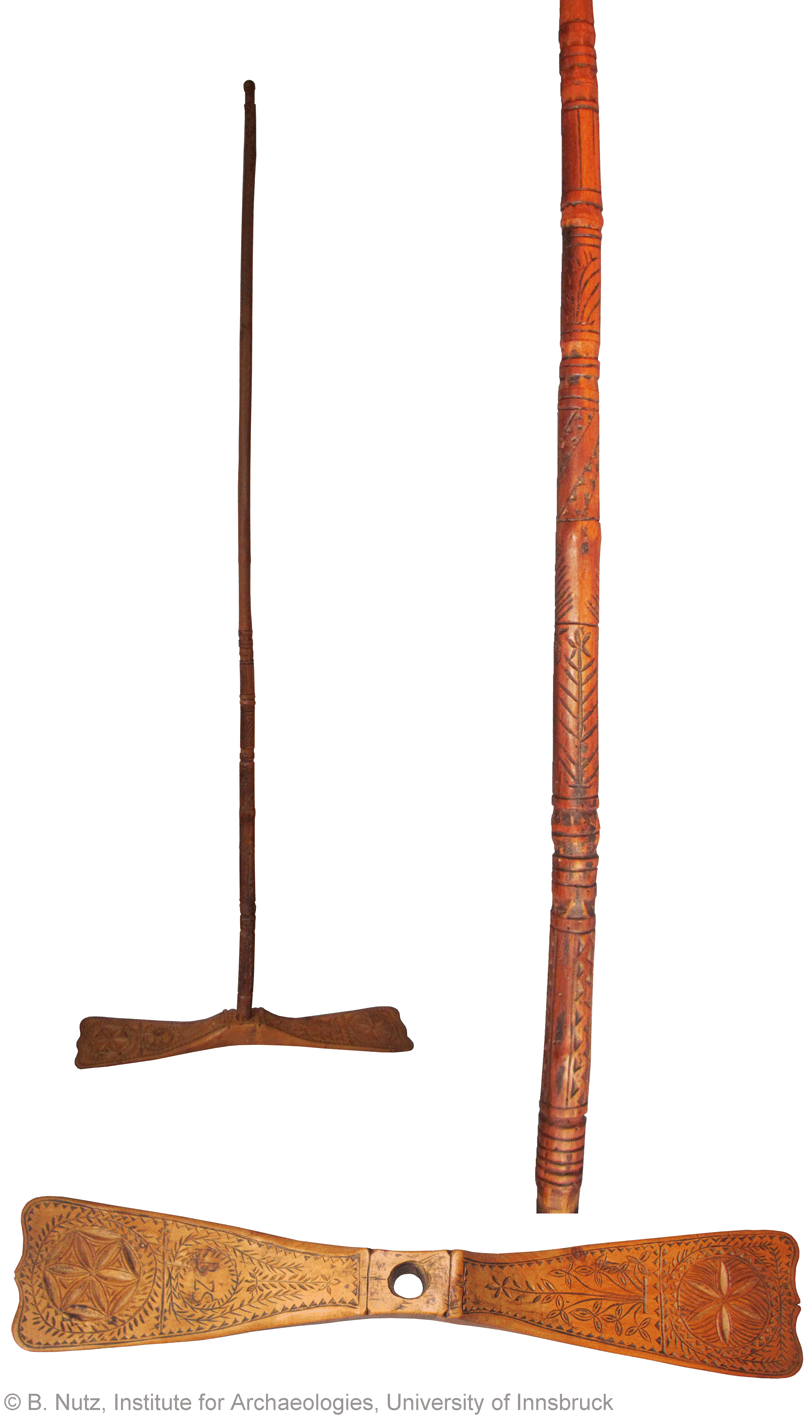

Hungarian distaff, 19th century, length: 25.19". In order to use this distaff tucked under the arm for spinning with a hand spindle the handle seems a little short (10.62"), but this distaff was probably once longer. Incision marks on the otherwise very smooth polished handle indicate that the bottom part of this distaff may have been cut off and the diameter of the staff at the (new) end of the handle was reduced. This has probably been done so that the distaff could be attached to a spinning wheel.
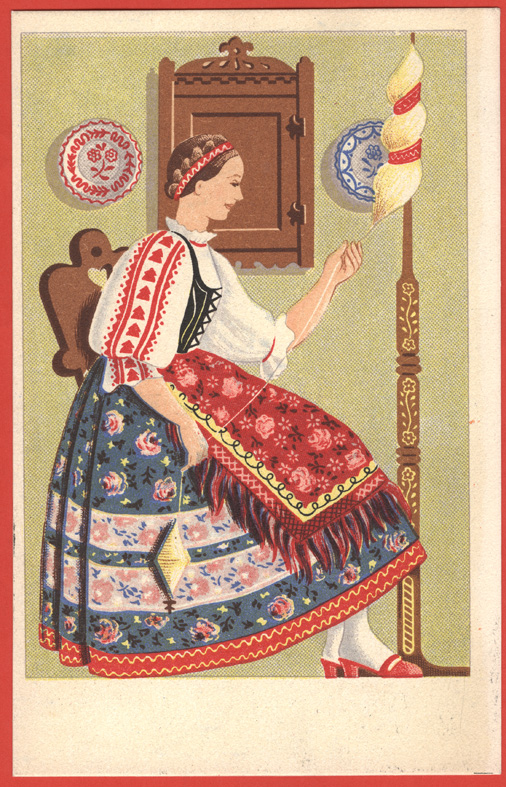
Postcard: Woman spinning with a distaff of the type talpas guzsaly (=distaff with base) with two “wings” as base (kéttalpú guzsaly).
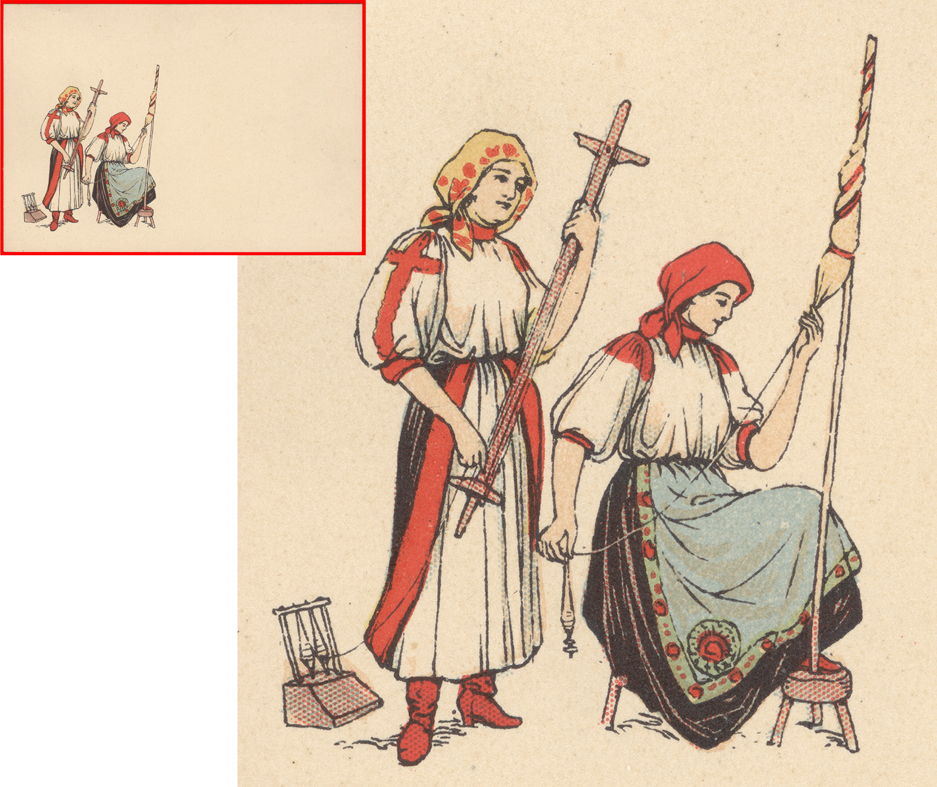
Postcard: Woman spinning with a distaff of the type székes guzsaly (= stool distaff).
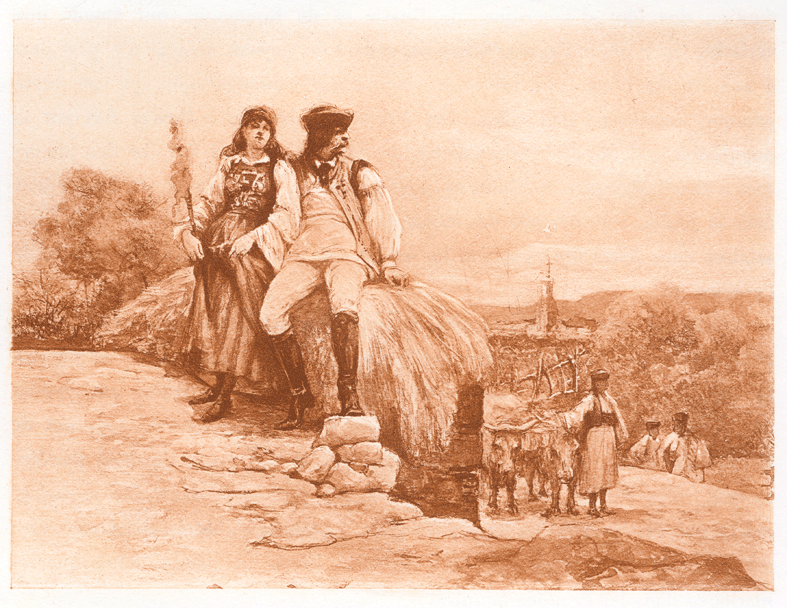
1 Transdanubia is a traditional region of Hungary. The borders of Transdanubia are the Danube river (north and east), the Drava and Mura rivers (south) and the foothills of the Alps roughly along the border between Hungary and Austria (west). Transdanubia comprises the counties of Győr-Moson-Sopron, Komárom-Esztergom, Fejér, Veszprém, Vas, Zala, Somogy, Tolna, Baranya and the part of Pest that lies west of the Danube.
2 The Little Hungarian Plain or Little Alföld (Hungarian: Kisalföld) is a plain (tectonic basin) of approximately 8,000 km² in northwestern Hungary, south-western Slovakia), and eastern Austria.
3 The Great Hungarian Plain (also known as Alföld or Great Alföld) is a plain occupying the southern and eastern part of Hungary, some parts of the Eastern Slovak Lowland, southwestern Ukraine, the Transcarpathian Lowland, western Romania, northern Serbia, and eastern Croatia (various names). It is the largest part of the Pannonian Plain.
4 Tiszántúl or Transtisza is a geographical region of Hungary which lies between the Tisza river and the eastern border of the country (literal meaning: "beyond Tisza"). Alongside Kiskunság, it is a part of Great Alföld.
5 Das Komitat Sathmar war eine Verwaltungseinheit im Königreich Ungarn. Heute liegt der kleinere Teil (etwa 1/4 des Gebiets) im Nordosten Ungarns, der größere Teil (etwa 3/4 des Gebiets) im Nordwesten Rumäniens (im heutigen Kreis Satu Mare).